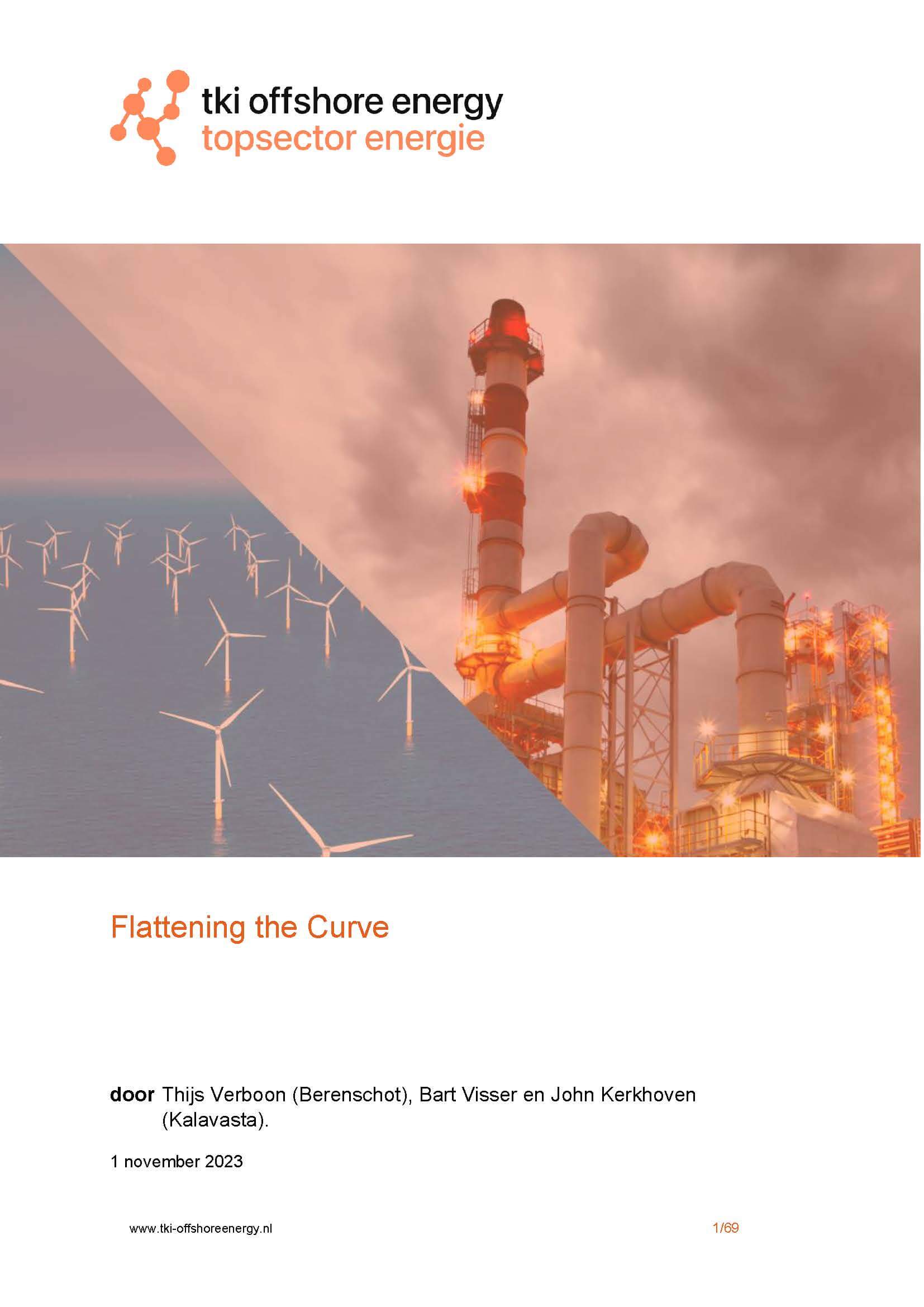Flattening the Curve


The goal of the study Flattening the Curve was to assess technological solutions on their ability to bring offshore energy supply and industrial demand closer together, and do so in a cost effective way. Many of these technologies, such as power to hydrogen, power to heat, thermal buffering or offshore solar-PV, have already been the subject of many flexibility studies. However, these studies often assume external parameters (e.g. industrial demand, available back-up power capacity and many other factors) as a given. In Flattening the Curve the energy system is build from the ground up, thereby providing insights into the fundamental costs and benefits of each assessed technology.
The scope of the study needed to be limited in order to keep the complexity of the system cost-analysis manageable. Focus has been placed on offshore energy production, offshore infrastructure and industrial electricity and hydrogen demand. However, other demand sectors, energy infrastructure and renewable energy production on land lie outside the scope of the study. The scope has been determined together with the commissioning parties of the study.
As a result of the chosen scope, clear conclusions can be drawn regarding the effectiveness of several technologies in closing the gap between offshore production and industrial demand. However, these conclusions can only been interpreted within the context of this limited scope. For example, the comparison between industrial production reduction versus back-up power capacity can be clearly made. However, the cost-effectiveness of thermal buffering and hybrid heat requires a disclaimer that onshore energy infrastructure was not included in the calculations.
Both hybrid heat and thermal buffering using cheap power to heat technologies such as e-boilers or resistive heaters can help bridging part of the gap between supply and demand in a cost effective manner. Additionally, power to hydrogen plays a very important role in utilizing surplus renewables. As long as offshore wind parks are at least partially connected to shore via electricity infrastructure for baseload demand, there seems to be no clear preference for onshore or offshore electrolysers. Furthermore, industrial production reduction can play some role in reducing the need for back-up power capacity. Limited use of industrial production reduction results in slightly lower system costs, however larger capacities become increasingly more expensive. In every scenario, there remains a large role for back-up power such as hydrogen power plants.
Offshore solar-PV does help in flattening the offshore production curve, however its cost-effectiveness is still uncertain. Additionally, battery storage does not seem to be promising from a cost-effectiveness standpoint when only the needs of industry is considered.